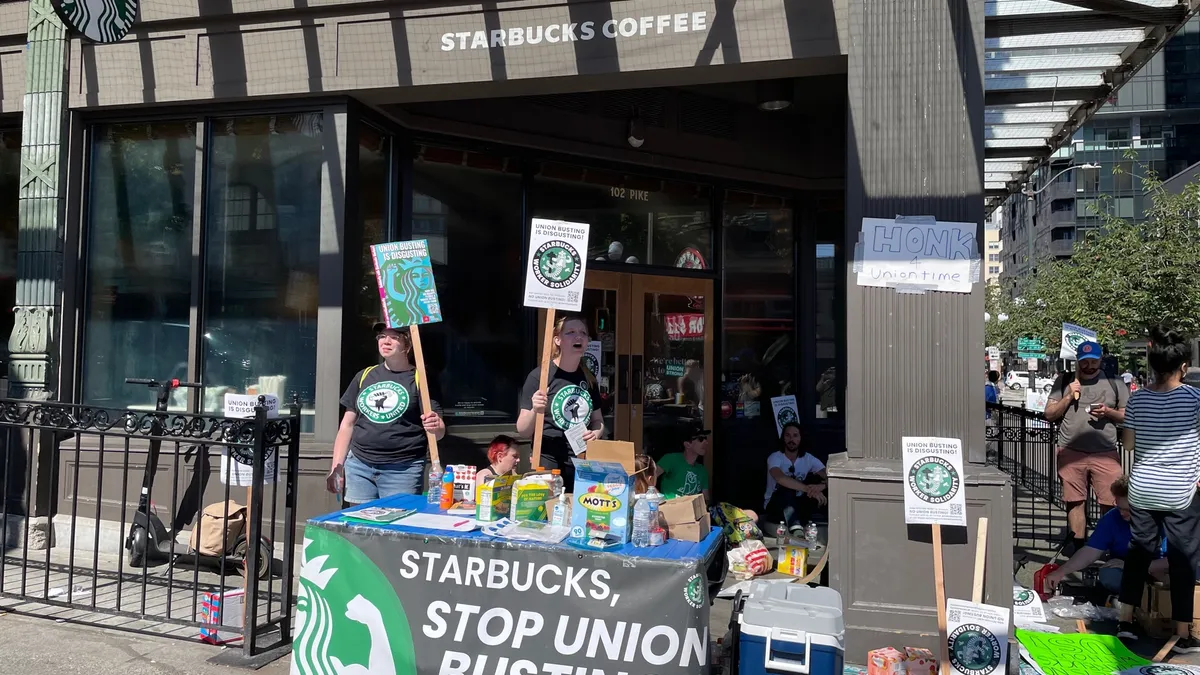Defining "employee recognition" is easy. Organizations that acknowledge, commend or congratulate employees are "recognizing" their performance in some way. WorldatWork, a nonprofit professional association specializing in compensation and total rewards, defines recognition as a "spontaneous gesture of thanks" or a structured program that acknowledges employees for reaching goals.
But while recognition sounds simple, it can get easily forgotten in the day-to-day. Regardless of how recognition is defined, either as an occasional "pat on the back" from the boss or a formal rewards program with the CEO doing the honors, it appeals to most employees — and employers can't afford to forget it.
Does recognition work?
Employee recognition is one of the least costly benefits employers can offer, starting from as little as 1% of an employer's payroll. But does recognition work? Employers apparently think so; 80% of organizations in a 2018 HRM/Globoforce survey said they operate an employee recognition program. For many employers, recognition is an investment in the wellbeing and performance of their workforce, and not just a cost.
Matt Grawitch, a professor of psychology at St. Louis University and a research consultant for the American Psychological Association's Center for Organizational Excellence, told HR Dive by email that recognition is about feeling as though a person is making a contribution and that those contributions are noticed and appreciated.
"Most people appreciate a simple 'thank you' from time to time, but recognition, as a broader practice, is about employers demonstrating to people that what they bring to the table adds value in some capacity," Grawitch said. "Whether we are talking about paying people fairly for the work they do, highlighting when employees achieve various milestones in performance or tenure, or calling attention to specific outstanding behavior, recognition sends the message that employees make valuable contributions and are instrumental in the success of the organization."
As much as people like being recognized for their achievements, not all recognition in the workplace is worthy of appreciation. Ineffective recognition is the kind given without any real association with or interest in employees as the receivers, Anne Donovan, people innovation leader at PwC, told HR Dive.
"'Check-the-box' recognition won't work. Companies that decide 'we want to show recognition' must have a relationship with workers first," Donovan said.
Effective recognition correlates strongly with higher retention. Some studies conclude that workplaces without some form of recognition for employees are more likely to lose them to a competitor.
"When employees are recognized for their accomplishments, they are more likely to stay at their companies," said Carolyn Slaski, EY (Ernst & Young) Americas vice chair of talent. In fact, 31% of respondents in EY's Belonging Barometer study said they would look for a new job if they felt excluded at work.
Grawitch said employees who feel valued and appreciated tend to be more committed to their organization and more engaged in their work, which makes leaving to find work elsewhere less likely. He added, however, that employees value different types of recognition.
Does misalignment between employers' recognition efforts and employees' expectations signal a failed program? The APA's 2014 Employee Recognition Survey examined both the performance categories employers tagged for recognition and what employees preferred as recognition. Employees' top five picks were:
- At least one form of recognition (Net) (87%)
- Salary (or merit) increases (62%)
- Fair compensation (47%)
- Performance-based bonuses (43%)
- Promotion or advancement (38%)
In employers' order of recognition, "salary increases" (39%) was a distant second to "at least one form of recognition" (81%), followed by verbal or written appreciation from a supervisor (31%), gift cards or gift certificates (24%) and promotion or advancement (24%).
But money certainly still plays a role.
"The top three forms of recognition desired by employees were all monetary based," Grawitch noted. "This doesn't mean that all employees are motivated by money or that money is the only viable form of recognition. However, if employees aren't paid fairly and/or seldom, if ever, receive merit-based pay raises, then other forms of recognition may not be less effective."
Which comes first, recognition or engagement?
Should employers first engage employees before they recognize their performance, or does better engagement follow recognition? In a LinkedIn survey released earlier this year, 70% of respondents said they would work harder if they received recognition for their efforts.
Donovan said recognition and engagement can't be separated — the two are intertwined. Describing recognition as a form of engagement that occurs daily, she said companies are constantly engaging with workers to understand them and find out what's important to them. "It's the day-to-day interaction that goes beyond the daily slog," she added.
EY found that recognition drives increased engagement, with the result being a work environment in which employees feel a greater sense of belonging, said Slaski. According to the Belonging Barometer, people feel a sense of belonging most when:
- People check in with them (39%).
- They receive feedback that helps them develop (31%).
- They're publicly recognized for their contributions at work (23%).
On the other hand, the survey found that people feel most excluded when they're not included in a meeting with their peers (22%) or when they're not recognized for their accomplishments, either publicly or privately (16%).
"It's clear that recognition has a direct correlation with one's sense of belonging, which is a good indicator [of] one's broader sense of engagement," said Slaski.
Grawitch described work engagement as "the degree to which people enjoy what they do, feel connected to their work, and can become engrossed in work activities." He also said, however, that recognition isn't synonymous with work engagement, which he noted can be influenced by such factors as competency or performance, personality, connection to an organization's mission, and the degree to which work fits in with other aspects of life. Recognition, then, is one way to stimulate and/or reinforce work engagement, he said.
Recognition: From the traditional to the innovative
The tried-and-true reasons for recognizing employees still stand:
- Length of service.
- Outstanding one-time achievement.
- Adding quality to a work process or product, or providing superior customer or client service over time.
Traditional, tangible rewards include on-the-spot bonuses of cash or gift cards, thank-you notes, gift certificates for retailers or restaurants and, on the higher end of the spectrum, paid vacation packages.
Valuable recognition doesn't have to be a public event or financial reward, Slaski said. "Across all levels and generations, we've found that our employees like to receive real-time feedback. Shifting the emphasis from retrospective performance evaluations and detailed written assessments to real-time, honest feedback is an important recognition tactic," she said.
Among the newer approaches to acknowledging workers are values-based recognition programs. Most employees in a 2017 Globoforce study — an overwhelming 93% — said their work has meaning and purpose when employers have values-based recognition initiatives, managers regularly check in on them, and relationships between managers and employees are solid.
PwC rewards employees with traditional forms of recognition, including e-cards and gift cards. However, Donovan said she envisions more innovative approaches emerging, such as inviting employees to take part in meetings with senior-level staff to raise their visibility in the organization or taking employees on tours of off-site venues to bolster their sense of wellbeing.
Whatever recognition looks like at a company, it's clear that employers that don't offer some form of it will get left behind in this tough talent market.
















